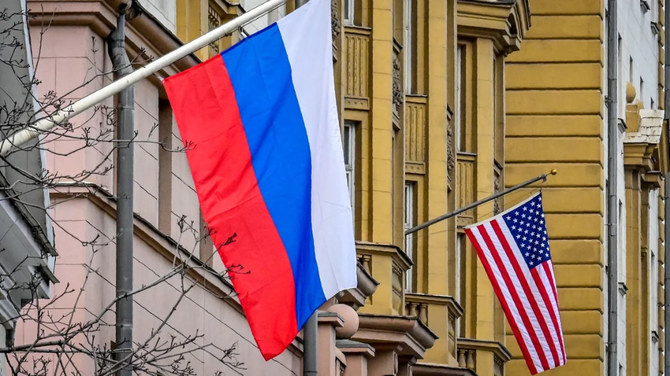
Authorities in the US and Russia carried out tests of their respective national emergency alert systems this week. Why now, you might ask? Has there been any evolution in their emergency response procedures that is salient to current strategic dynamics?
Tensions between them are certainly rising quickly, which means it is important to test the effectiveness of systems that can alert the public to emergency situations, including potential nuclear threats, especially as arms control treaties seem to be falling apart.
In January, the science and security board of the Bulletin of Atomic Scientists set the Doomsday Clock, a symbolic measure of the threats and challenges facing humanity, to 90 seconds to midnight, the closest to calamity the world has ever been judged to be. It had been set at 100 seconds to midnight since 2020.
The Doomsday Clock was introduced in 1947, in the wake of the Manhattan Project and the use of nuclear weapons at the end of the Second World War. The Bulletin of Atomic Scientists is the organization that updates the clock, if required, in January each year, moving it closer to or further from midnight as it deems appropriate.
It said in January that the decision to move the clock closer to midnight this year was largely, though not exclusively, the result of growing threats resulting from the war in Ukraine, which began with the Russian invasion of the country in February 2022.
In the US, the Federal Emergency Management Agency, in coordination with the Federal Communications Commission, conducted nationwide tests of the country’s Emergency Alert System and Wireless Emergency Alert System on Wednesday. They took place at approximately 2:20 p.m. Eastern Standard Time across the whole of the country, including Hawaii and Alaska.
Such a test of FEMA’s alert systems is nothing new; there have been six previous tests. However, the latest one came as nuclear politics continue to heat up.
The emergency alert messaging technology was ostensibly being tested to check new rules and procedures developed as a result of previous nationwide tests. The non-wireless aspect of the test involved an alert sent to radios and television stations.
The wireless test message was sent directly to all consumer cell phones and appeared in English or Spanish depending on the language settings of the device receiving it. It was the third nationwide test of the system but only the second sent to all compatible cellular devices.
Reports of some devices buzzing for as long as 30 minutes after receiving the message were common. On other systems, there was intermittent beeping.
Ultimately the aim of the test was to identify potential weaknesses in the systems. The test was a success, authorities said, and the updates to the systems for keeping Americans informed of imminent threats work properly. It is assumed that measures have also been put in place to counter any attempted cyberattacks that might target the system.
The trend of the past 30 years or so away from the threat of nuclear war now seems to be reversing.
Dr. Theodore Karasik
At the same time authorities in the US were testing their Emergency Alert System, their counterparts in Russia were doing the same. The Russian drill included the testing of sirens and practice of using radiation suits in a few cities. The technology being tested was clearly much less advanced than the American systems.
The Russian population is educated in a different way about nuclear testing and the survivability during nuclear warfare than their American counterparts. Russia’s test therefore had high political and strategic value for Russian President Vladimir Putin, who spoke publicly the following day about possible plans to resume the testing of nuclear weapons.
Any resumption of nuclear tests by Russia, the US, or both would be profoundly destabilizing at a time when tensions between the countries are higher than they have been at any time since the 1962 Cuban missile crisis.
Putin said Russia’s nuclear doctrine does not need updating but he was not yet ready to definitively state whether or not the country needs to resume nuclear tests. He did say that Russia should consider revoking its ratification of the 1996 Comprehensive Nuclear Test Ban Treaty, noting that the US, which also signed it, has yet to ratify it. Hours after Putin’s comments, Russia’s top lawmaker, Vyacheslav Volodin, said the nation’s parliament will consider revoking the ratification of the treaty.
These developments signal that Russia does indeed plan to resume nuclear tests, or is seriously considering doing so. Established arms control measures are continuing to disintegrate before our eyes as the confrontation between Russia and the West escalates.
Meanwhile, the US is also planning to resume nuclear tests, although it will stop short of actually detonating a device. Scientists charged with ensuring the aging US stockpile of nuclear warheads still work say the weapons are “good to go.” However, experts have not been able to physically test their effectiveness and reliability since US authorities introduced an underground-testing ban in 1992.
But US sentiment could be shifting as Russia moves closer toward the possible resumption of nuclear testing. A $1.8 billion project known as “Scorpius” could make it possible, as early as 2027, to move far beyond the current realm of theoretical computer modeling of nuclear explosions and provide a much more sophisticated way to accurately test nuclear weapons without the need for any detonations.
For the next four years, however, the US will continue to rely on maintenance checks and emergency drills, rather than detonating nuclear weapons, thereby maintaining the moral high ground over Russia should Moscow follow through on the threat to resume test detonations.
Meanwhile, all this nuclear activity by the US and Russia, in whatever forms it might take, will lead to more tests of emergency alert and response systems. We have therefore entered a new nuclear era of possible tests and maybe even use. And, of course, there are other countries that are not constrained at all by nuclear test bans, including North Korea.
The trend of the past 30 years or so away from the threat of nuclear war now seems to be reversing, and the tests of emergency alert systems this week are very visible symptoms of a much larger problem, as countries rethink their views on nuclear weapons. Europe might be the next place to schedule tests of emergency alert systems in the coming months as authorities there ponder possible policy adjustments.
• Dr. Theodore Karasik is a senior adviser to Gulf State Analytics in Washington.
X: @KarasikTheodore












